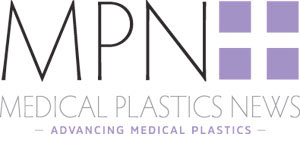As the current global immunization against COVID-19 rollout has shown administering conventional needle vaccines at scale has its limitations. John Kawola, CEO – Global, Boston Micro Fabrication, explains how micro 3D printing microneedles could radically change how the world responds to vaccine distribution.
More than 1.5 billion doses of the COVID-19 vaccine have been administered around the world, according to the latest figures from Bloomberg. Those numbers are certainly impressive considering the short timeline from vaccine development to deployment, but the last several months have exposed some major logistical challenges of conventional needle vaccines – most notably, their difficulty in administering at scale.
Imagine how much easier distribution could be if a vaccine could be mailed directly to your door and administered via a tiny, painless patch that sticks to your arm. What if vaccines in this form could be sent out to impoverished or remote locations that don’t have access to healthcare? Advances immunization technologies, namely microneedles, are bringing these ideas closer to reality.
The concept of microneedles for vaccinations or other drug delivery had been around for a while, but COVID accelerated demand and research to make it happen. But once the delivery method for microneedles is finalized, the industry faces another hurdle: figuring out how to manufacture these tiny, functional devices at scale, and as cost-effectively as traditional inoculation methods. The answer lies in micro-precision 3D printing.
Brining Us Closer to the Future
A team of collaborators, led by Carnegie Mellon University with participation from Boston Micro Fabrication (BMF), recently revealed that they are developing a novel approach to vaccinations with a low dose, inexpensive and hybrid microneedle array technology. The microneedle arrays consist of hundreds of tiny needles on a small patch that, when applied to the skin, can quickly dissolve and deliver the vaccination.
This delivery method requires a small dosage amount (as little as 1/100th of the dose of a traditional vaccine) without the same level of cold chain storage requirements, meaning it had the potential to simplify the transport and storage of vaccines, reduce vaccine shortages, and more easily distribute vaccines to people around the world. These are all concerns that have been exposed in recent months with traditional methods of vaccine deployment.
The research, so far, has been promising – it found that the smaller the microneedles, the easier it is to puncture the skin and deliver the vaccine effectively. This finding introduces a whole new set of challenges for putting the microneedle arrays into use, and it’s where micro 3D printing comes into play.
When Smaller is Better, Bigger Challenges Arise
As with any type of manufacturing and product engineering, the smaller the part, the harder it is to design, the more expensive it is to make, and the more complicated it is to put into production at scale. This notion is especially true in traditional manufacturing methods, such as micro injection molding and computer numerical control (CNC) machining, where the smaller and more detailed the part, the higher the cost and the longer the wait to get it (and, if this pandemic taught us anything about manufacturing, it’s that time is of the essence).
Additive manufacturing has long been considered a more cost-effective and time-efficient approach, but even 3D printing has traditionally lost its appeal as parts become smaller. Challenges with precision and accuracy have caused innovation roadblocks for years; quite simply, there has been a lack of viable additive manufacturing technologies available that can print with the right resolution and at scale.
The high costs associated with traditional manufacturing methods, combined with the lack of capable 3D printing alternative, would have crushed the promise of microneedle vaccinations before the research was even complete if it weren’t for recent developments in micro 3D printing. Newer technologies, such as stereolithography (SLA), digital light processing (DLP), and a combination of the two called projection micro stereolithography (PµSL), can finally produce ultra high precision, micro sized parts that are suitable both for rapid prototyping and production.
Micro 3D Printing for Microneedles
Carnegie Mellon invited BMF to participate in the research because of the company’s PµSL technology, which can print small parts down to 2 µm resolution. The technology makes it possible to print at the right resolution, size, and accuracy with precision and efficiency … but how exactly the micro 3D printing will be used to produce the final microneedle vaccine is up for debate.
In a perfect world, PµSL would be used to print the microneedles for end use using a dissolvable, biocompatible material. This would be the most efficient way of going about bringing the arrays to production and distribution, and would cut out other processes such as molding, but this method is reliant on developing the proper dissolvable material. With time of the essence, there are a number of alternatives to consider as well.
One of these options would be using PµSL to print mold patterns that have enough strength to be used to create molds, which would then be used for production. This would allow for many microneedles to be printed off the same 3D printing mold, and would still be more cost effective, accurate and precise compared with traditional manufacturing methods.
Although microneedle vaccines are still in the early stages of research and development, there’s no doubt that micro 3D printing will play an integral role in making their mass manufacturing and distribution a reality. These tiny devices have the potential to completely revolutionize the way the world responds to health crises and immunizes millions of people, rapidly, at scale, and although COVID-19 was hopefully a once in a lifetime event, the innovative vaccine manufacturing and delivery techniques being developed today will ensure a smoother fight against any future threats.
This article was originally published on Medical Plastics News Issue 17 on page 32-33.

